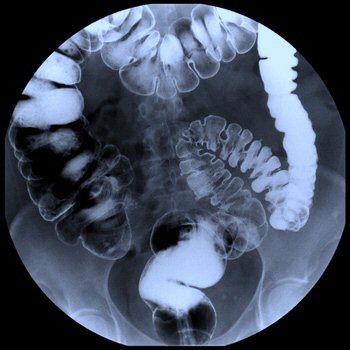Gastrointestinal Radiology

The skills required to properly perform and interpret fluoroscopic procedures of the GI tract are acquired through a closely supervised, hands-on approach, starting with uncomplicated procedures and gradually advancing to more complex radiological investigations.
In addition to routine examinations of the upper and lower GI tract the following procedures are offered:
Assessment of variety of swallowing disorders through modified barium swallow.
Enteroclysis for detailed evaluation of the small bowel .
Assistance in performance as well as interpretation of studies like ERCP and Defecography.
The training commences with a 4 week introduction to Double Contrast GI radiology, in the first year of the residency. This is followed by supervised but active involvement of residents in the activities of the division in the remaining 3 years.
Residents learn the proper tailoring of procedures in order to achieve clinically relevant studies. This includes the proper choice of Double vs. single contrast phase studies and the indication for and risks of water soluble contrast.
Regularly scheduled, small group ,or individual “Teaching File” sessions assist in sharpening diagnostic skills and expose residents to a variety of GI abnormalities.
Monthly, department wide, unknown case conferences gives residents a chance to tackle more difficult clinical cases. Curriculum based lectures in GI radiology supplement the case based conferences.
Abdominal CT has become the cornerstone imaging modality in most patients with abdominal emergencies. The proper utilization of fluoroscopic procedures in these patients is emphasized.
In the past few years the use of CT Colonography has significantly increased . The procedure is now routinely performed at our section for patients with incomplete optical colonoscopy or patients who cannot undergo optical colonoscopy.